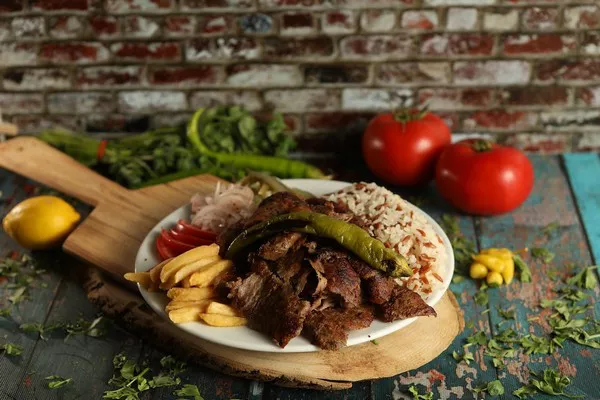In a wave of sudden violence, armed assailants launched an attack on the vulnerable farming community of Bujo, Mali, leaving the residents with no warning or means to protect themselves. Tragically, those unable to escape faced dire consequences, and by morning, the village lay in ruins, its homes burned, livestock stolen, and stores looted. The aftermath witnessed the burial of 17 victims in a communal grave, with survivors forced to make a 15-kilometer trek to the nearby town of Bandiagara, where they currently seek refuge.
This mid-August attack is one of over a dozen assaults that occurred last month in a concentrated area of central Mali. These brutal raids have resulted in the deaths of at least 100 individuals and the displacement of tens of thousands of people.
“We are really completely lost. We need food, shelter, everything. We want to go home to our village but there is no one to keep us safe there,” expressed Wilas Bujo, a 59-year-old farmer who fled to Bandiagara with 13 members of his family.
Recent events underscore the grave threat faced by civilians in Mali. Last week, al-Qaida-affiliated militants from the Jama’at Nusrat al-Islam wal-Muslimin (JNIM) targeted a passenger boat on the Niger River, resulting in the loss of around 50 lives. Simultaneously, a government military base was attacked, claiming the lives of 15 soldiers.
Mali is among the nations most severely affected by extremism in the central Sahel region, which has been identified as the global epicenter of terrorism. According to data from the Institute for Economics and Peace, terrorism-related deaths worldwide decreased by 9% to 6,701 in 2022. However, Mali witnessed a starkly different trend, with a 56% increase in such deaths, totaling 944, most of which were civilians.
Analysts attribute the escalating violence in Mali to a complex web of interconnected social, economic, environmental, and political crises. Among the contributing factors is the military coup in 2021, which led to the ousting of a democratically elected leader. Subsequently, Mali’s new government terminated a substantial French military presence and employed the Wagner Group, a Kremlin-linked private military company employing approximately 1,000 mercenaries.
In June, the new Malian authorities demanded the withdrawal of Minusma, a UN peacekeeping force comprising 13,000 troops that had been stationed in the region for over a decade. The attacks on villages like Bujo commenced shortly after the UN force’s departure.
Similar attacks have also unfolded in northern Mali, where the city of Timbuktu is under blockade, and clashes have erupted in Ber. Furthermore, the 2015 peace agreement, which marked the end of a Tuareg rebellion, is now in jeopardy, according to analysts.
The absence of UN peacekeepers or state presence has raised concerns about the potential for extremist groups to expand their control across northern and central Mali, imperiling the fragile peace deal.
The recent attacks in and around Bandiagara have yet to be claimed by any specific group. Witnesses noted that the assailants shouted “Allahu Akbar,” suggesting the involvement of Islamic militants. These tactics mirror those employed by extremist elements in other parts of Mali.
One contributing factor to the violence’s intensification is the fierce rivalry between two major Islamist extremist organizations: JNIM, linked to al-Qaida, and Islamic State in the Greater Sahara (ISGS). Both groups vie for territorial control and aim to assert their dominance through force. Control over communities is vital for recruiting and fundraising efforts. According to a recent UN expert report, JNIM extracts resources and financial support “from almost all communities in the north of Mali and elsewhere.” They argue that these funds are necessary to defend these communities against Islamic State.
In addition to these financial tactics, extremists impose levies on livestock, truck traffic, and Mali’s extensive artisanal gold mining industry. They have also profited from smuggling fuel, narcotics, cigarettes, and other contraband across the Sahara, as well as ransom payments. While Western hostages have garnered significant media attention, hundreds of Malians have also been abducted.
Malian villagers often find themselves caught between armed insurgent groups and government security forces. The Malian army and Wagner mercenaries have been implicated in numerous violent incidents, including massacres, extrajudicial executions, torture, and indiscriminate detentions.
In many instances, villages surrounding Bandiagara had negotiated informal agreements with roaming extremist groups, seeking to ensure their safety. However, these pacts were disregarded when village elders declined to pass on intelligence about government troop movements or refused to provide young men as fighters.
Multiple factors contribute to insecurity and extremism in the Sahel, including political unrest, poor governance, unemployment, corruption, and a lack of reliable information. Climate change-induced environmental crises have exacerbated resource-related conflicts.
In Bandiagara, local residents have mobilized to aid the displaced. Nevertheless, the resources they can provide—money, food, bedding—are insufficient to meet the needs of the influx. Even before the population surge, the town faced a water shortage.
Daniel Kené, who fled from Jomollo Kanda, emphasized that displaced villagers are staying with relatives or camping in tents, schools, or in the open, despite heavy rainfall. He expressed a pressing need for assistance to return home, highlighting their essential role as farmers who need to tend to their fields to ensure a harvest in the coming months.
As the cycle of violence and displacement continues, hope dwindles among those affected, with a growing sense of despair permeating the region.

